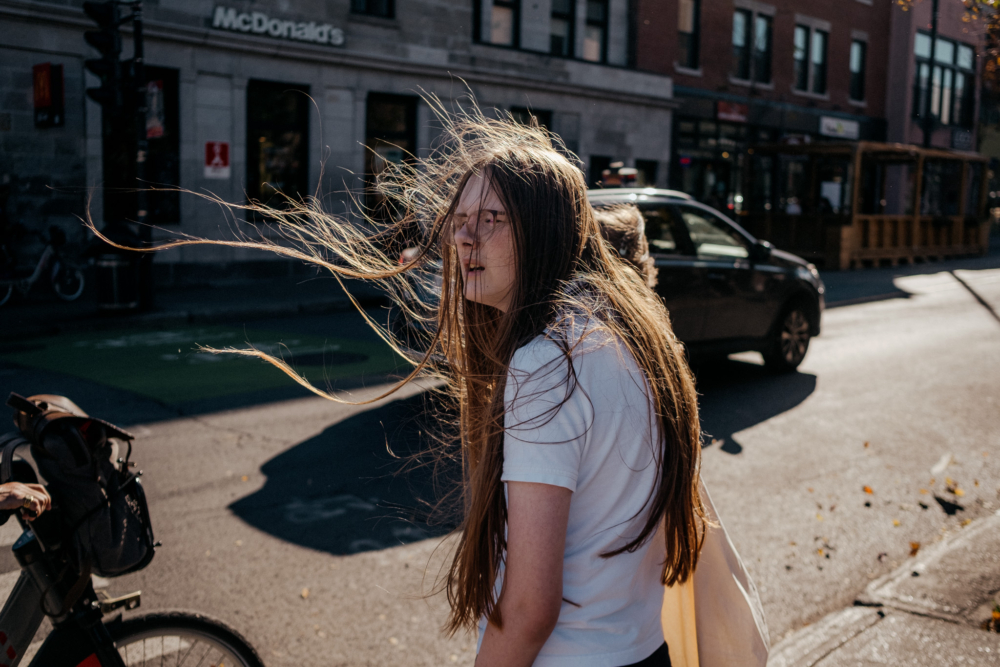On a winter morning in Montreal, the air feels dense, like the city itself is catching its breath. The streets are dusted in remnants of salt and slush, windows fog with condensation, and strangers pass each other with practiced indifference. But to Philippe Arsenault, a Montreal based photographer and DOP (who goes by Layers.Mtl on Instagram), the city’s rhythms hum with potential. At any moment, the mundane might twist into the extraordinary—a burst of laughter in the cold, a pigeon scattering against a busied urban tableau, a tired commuter’s private reverie interrupted by the sun cutting through the clouds.
Montreal, with its snow-laden stoops and stubborn streak of imperfection, is more than Arsenault’s home—it’s his collaborator. Its streets form the raw material for his work, a place where beauty collides with chaos and grace hides in unexpected corners. For years, the Montrealer has walked the city with the eye of a storyteller, capturing its moods in stolen moments and candid portraits. “Photography pushes me to step outside and see the city for what it truly is—ugly, beautiful, imperfect, and alive,” he says.
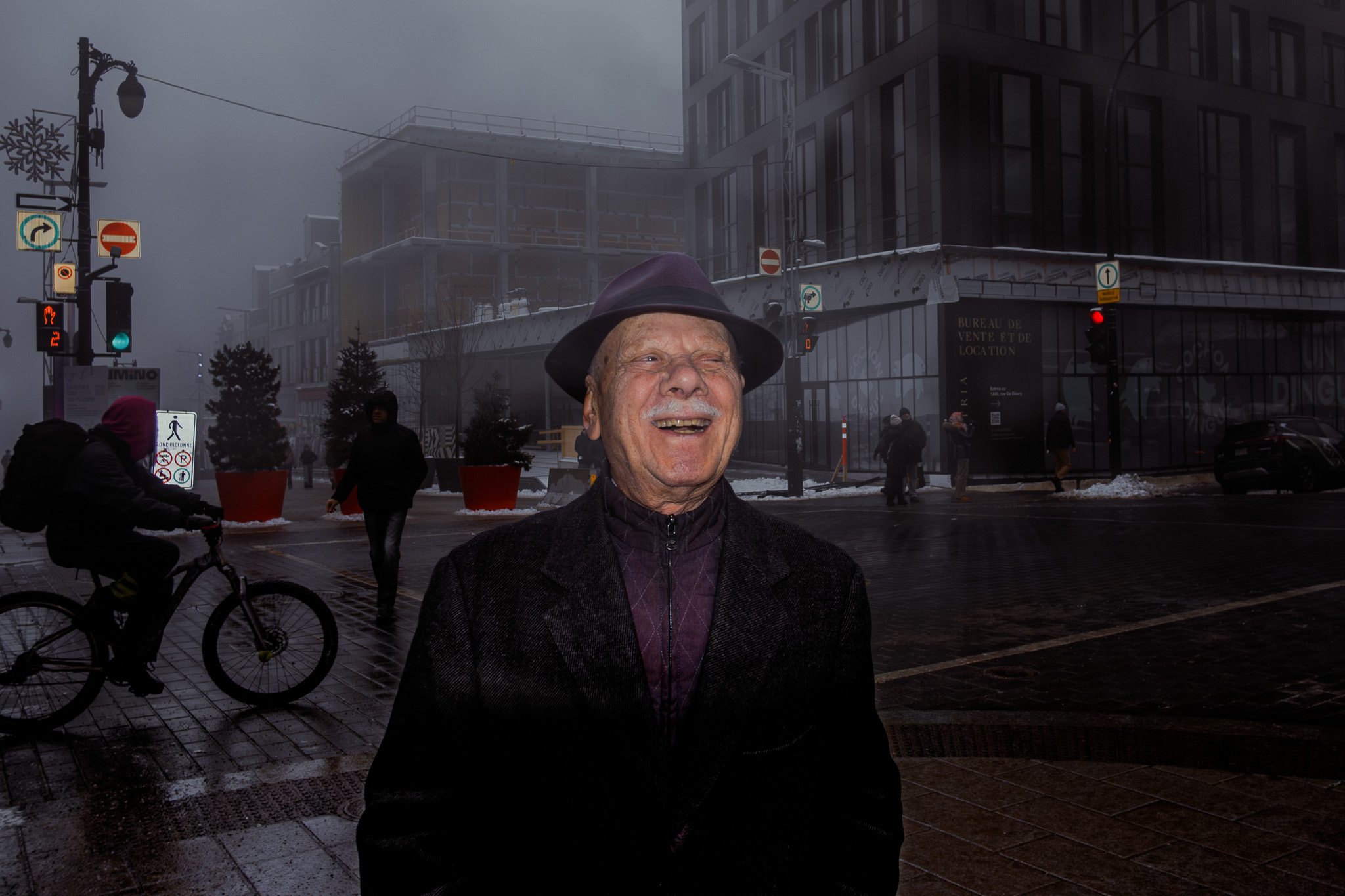
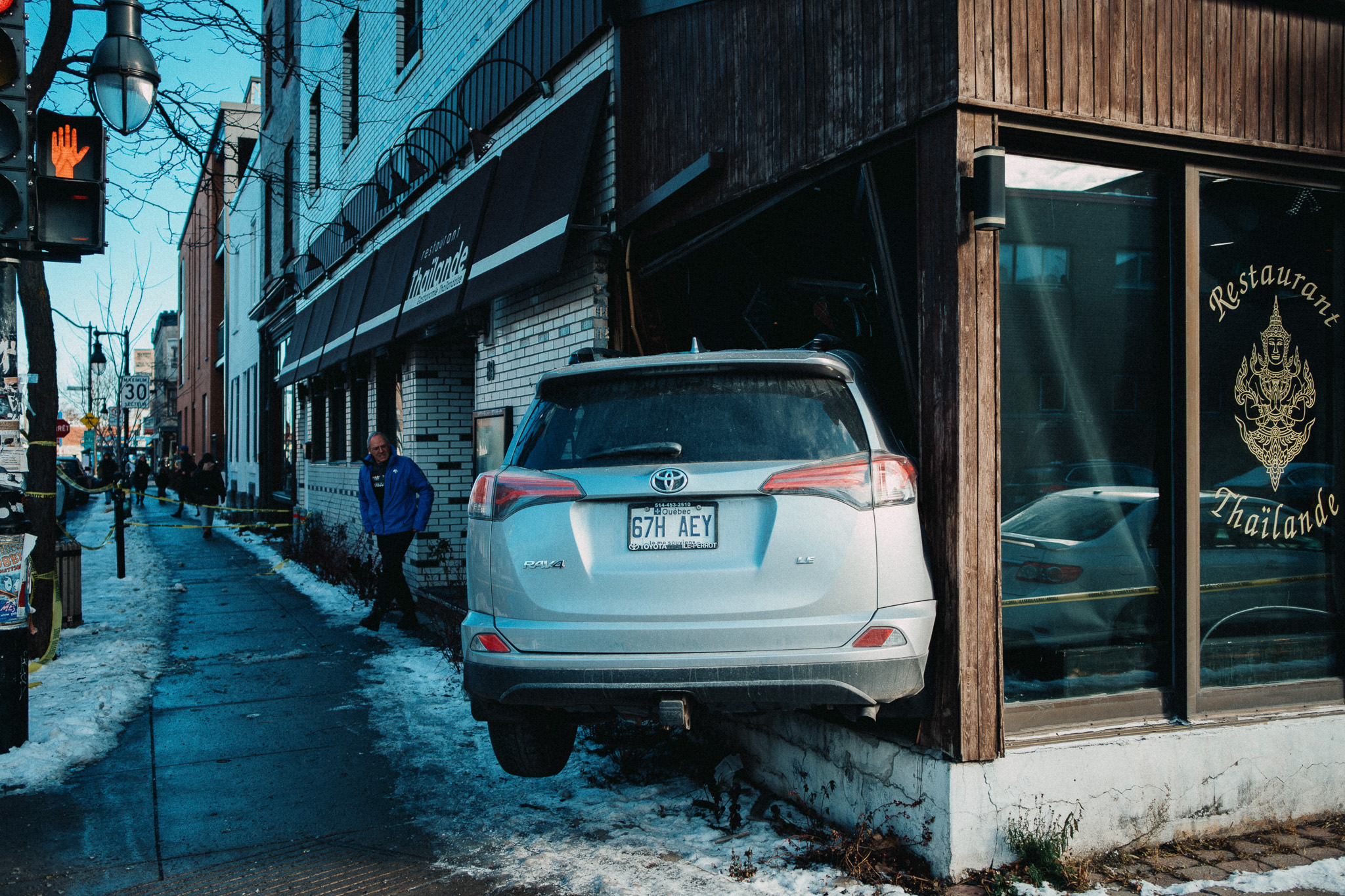
Arsenault’s background as a graffiti artist is etched into his work, not through explicit reference but in the way he reads the city as a canvas. “Graffiti was the drug, and we were hooked—with style, colours, big letters, all city,” he recalls of a distant time in his life when the much maligned art-form made the city his muse. The same instinct that drove him to paint his name across Montreal now pulls him toward moments of unguarded humanity. His photography, like graffiti, is both an assertion of presence and an act of recognition—a way of saying, I see you.
His compositions are steeped in contradiction: beauty and ruin, intimacy and isolation, irony and tenderness. A luxury perfume ad looms above a makeshift shelter; a child in a bright pink coat skips through shadows while a storm of grown-up worries brews behind her. These juxtapositions speak to Arsenault’s fascination with the textures of city life—the way chaos and grace collide at every intersection.
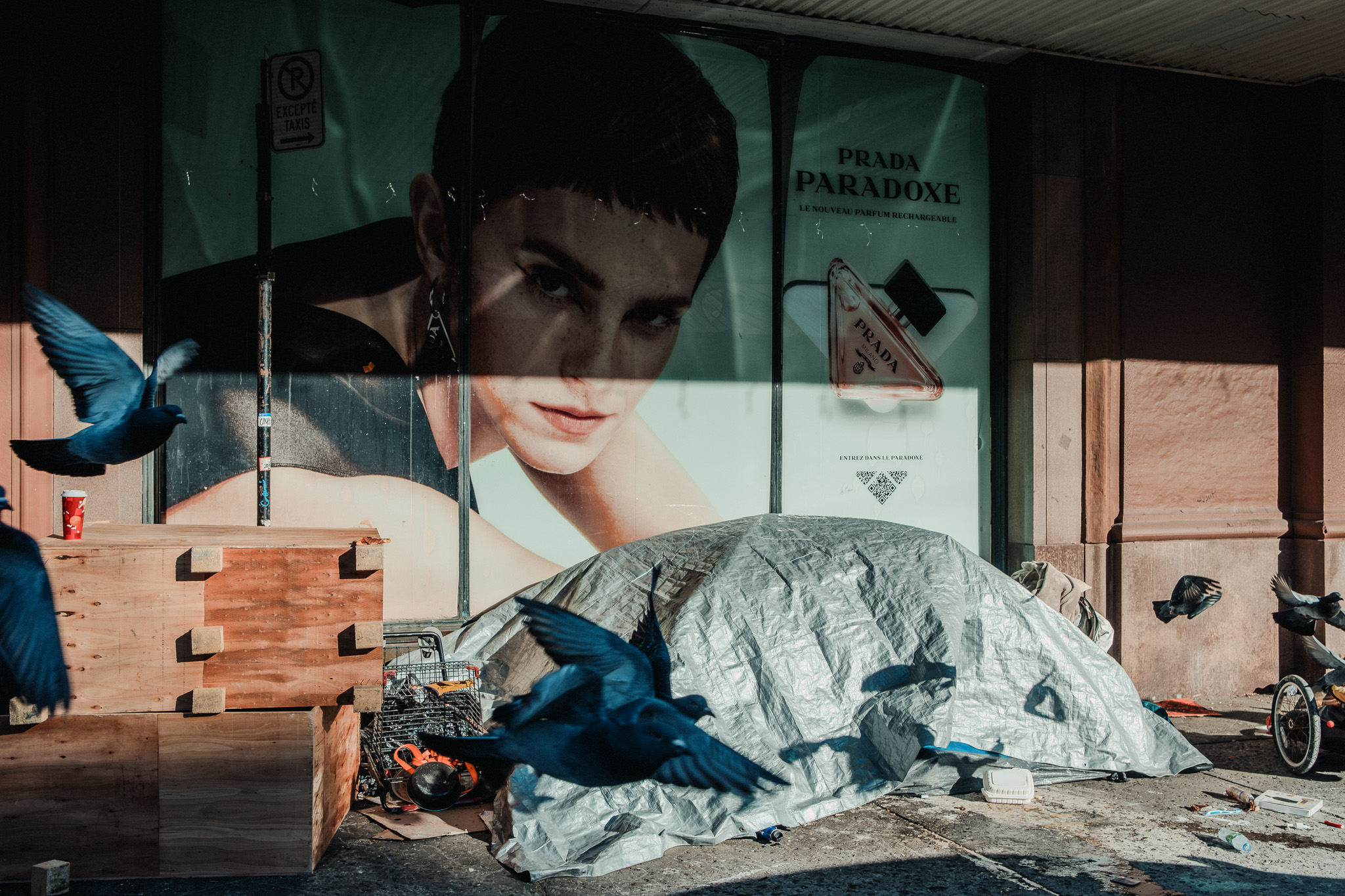
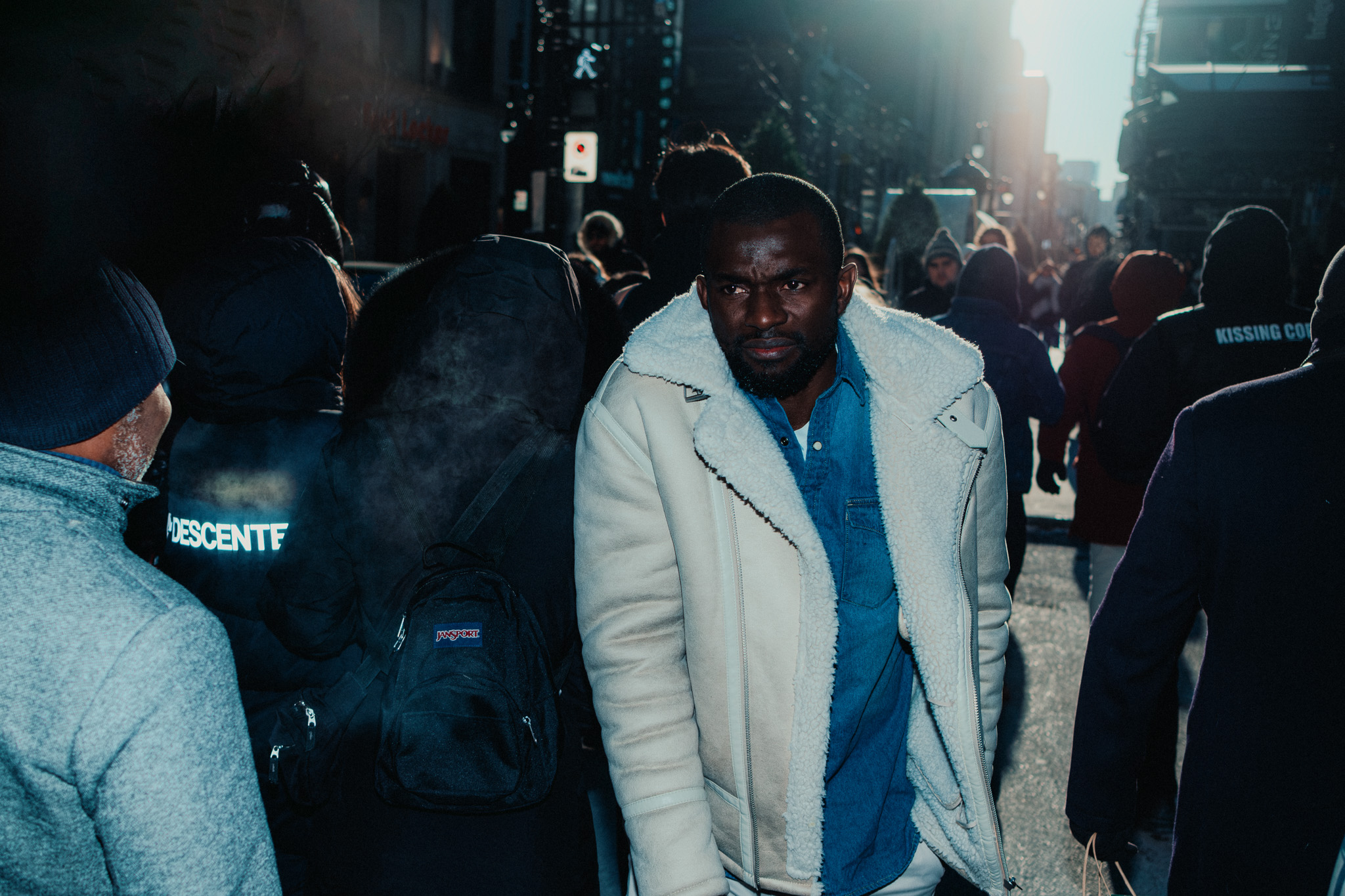
“Photography connects me to my city and its people in a more intimate way,” he explains. His images are not polished or posed; they’re alive with chance encounters and unscripted poetry. A man in the midst of a crowd locks eyes with the camera, his gaze defiant and unflinching. Three friends in oversized hoodies laugh beneath the rain, unaware of the world watching. Arsenault’s subjects seem to occupy two realities at once—their own private narrative and the shared, messy stage of urban existence.
Influenced by the likes of Vivian Maier, Martin Parr, and Garry Winogrand, Arsenault’s work carries echoes of their sensibilities—Maier’s quiet elegance, Parr’s sharp irony, Winogrand’s celebration of chaos—but never feels derivative. Instead, his photography feels rooted in the now, and in the spirit of Montreal’s specific palimpsest aesthetics and ethos: the city’s seasons of slush and sun, its architectural grit, and the surprising moments of tenderness that emerge from its streets.

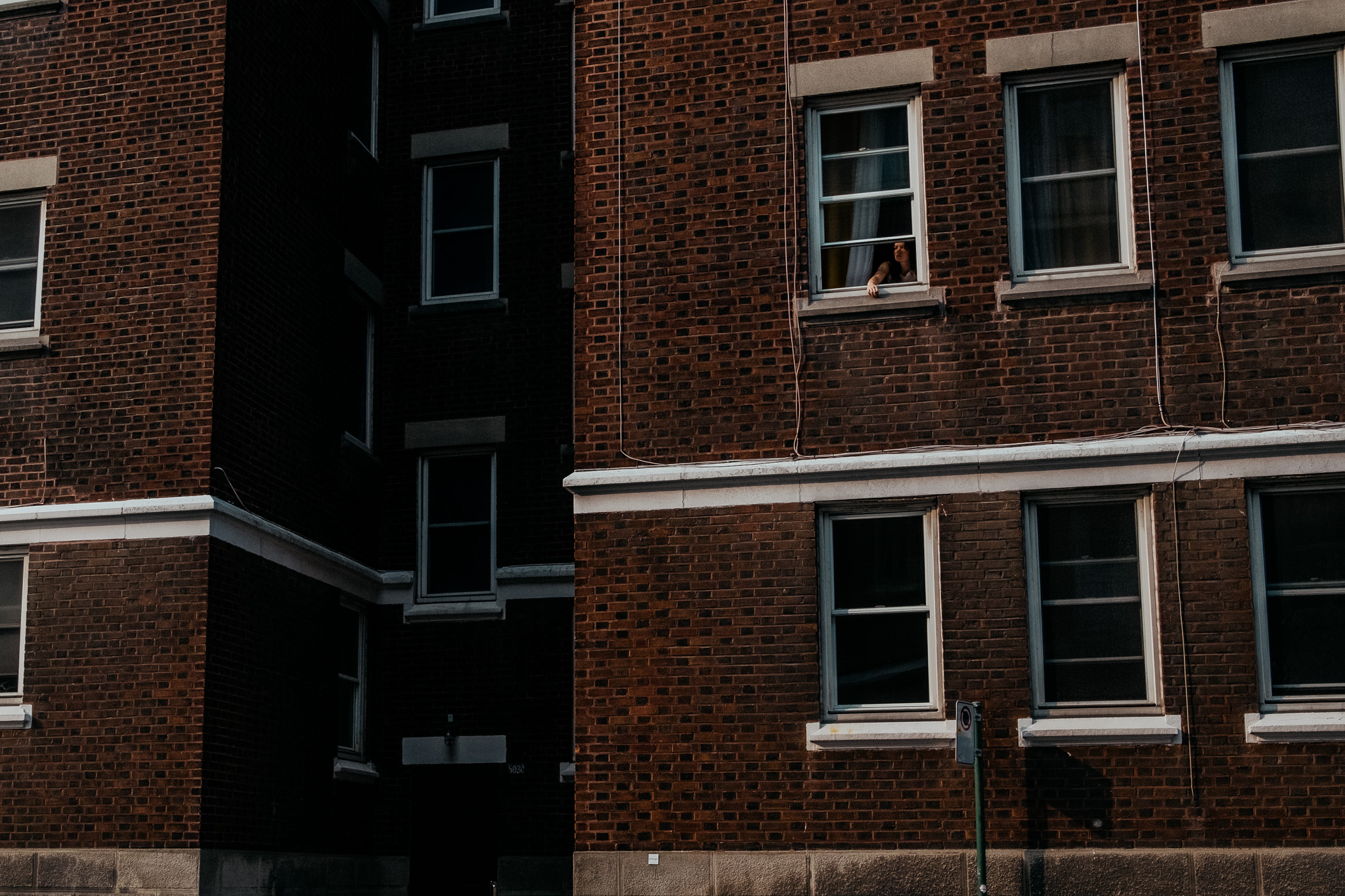
There’s also a cinematic quality to his work, a nod to his years as a director of photography. His understanding of light and composition lends his images a depth that feels almost narrative. But where film-making felt slow and controlled, photography offers a raw immediacy. “I’m drawn to those fleeting moments that feel too real to script,” he says. Each image carries a sense of urgency, as if capturing the moment is an act of preservation—a way to resist the passage of time.
Yet, for all its quiet drama, Arsenault’s work never feels heavy-handed. There’s playfulness too—a man in VR goggles gesturing wildly on the street, an elderly lady exasperatedly throwing her arms up at a news crew as her neighbours look on, impassive. His photography reminds us that life’s beauty often lies in its contradictions, in the unexpected absurdities that unfold in plain sight.
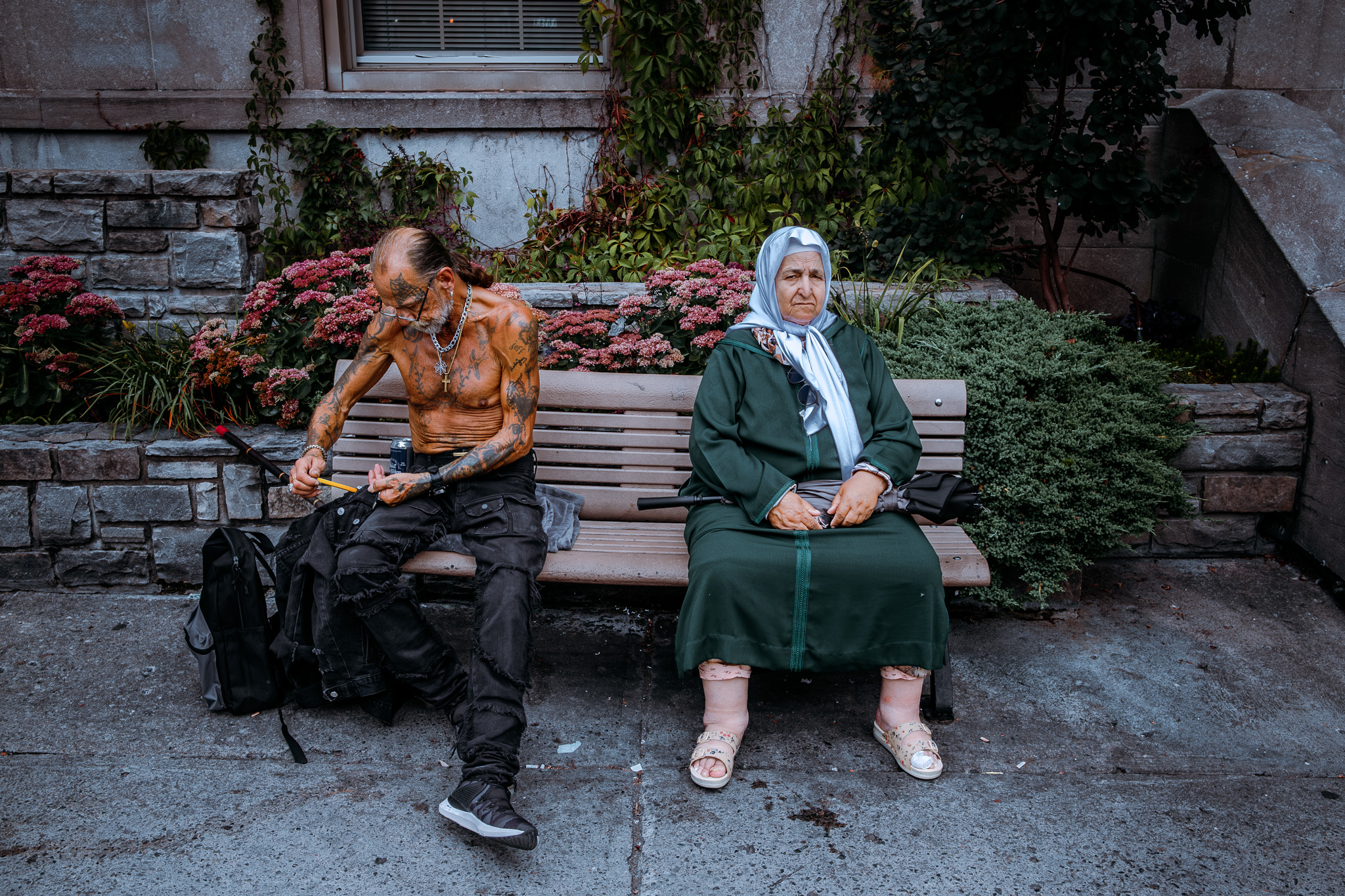
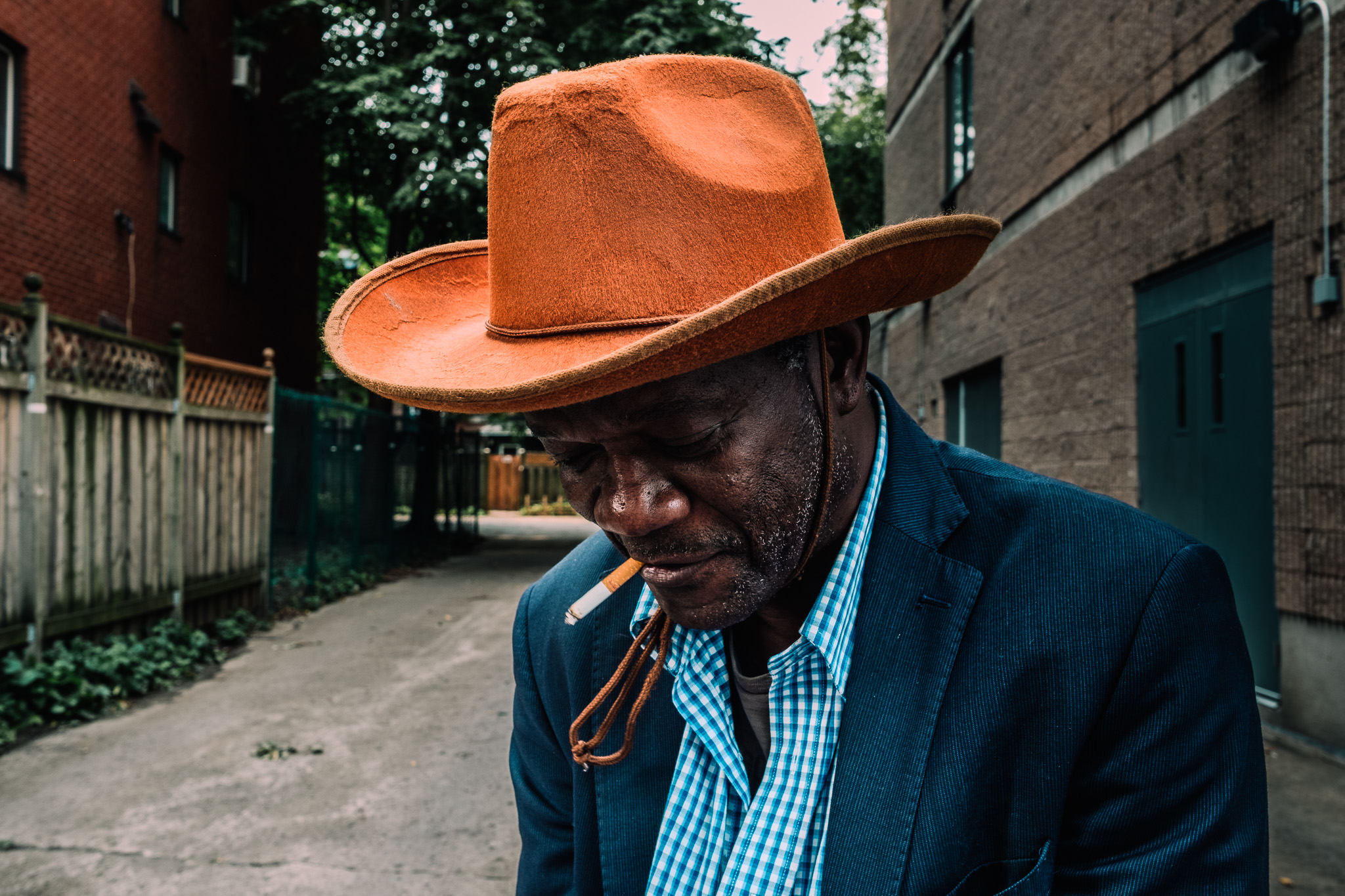
It’s been less than a year since he began dedicating himself fully to photography, but the response has been remarkable. “I dream of books, of exhibitions. But for now, there’s only one thing on my mind: to get out and shoot,” camera in hand, ready to embrace whatever the city gives him. “When you love something, you want to hold onto it, nurture it,” he reflects. And for him, that means deepening his visceral connection to the city.
Arsenault’s Montreal is imperfect, weathered, alive. His images capture more than just a city—they capture its pulse, its serendipitous poetry, and its resilience. Through his lens, we’re reminded that even amidst the chaos, there is grace to be found in the unguarded, the overlooked, and the fleeting.

Cody Rooney is the Editor in Chief and senior contributor at liminul.
He is a PhD candidate, digital content specialist, writer, editor, multi-media artist, and photographer.

